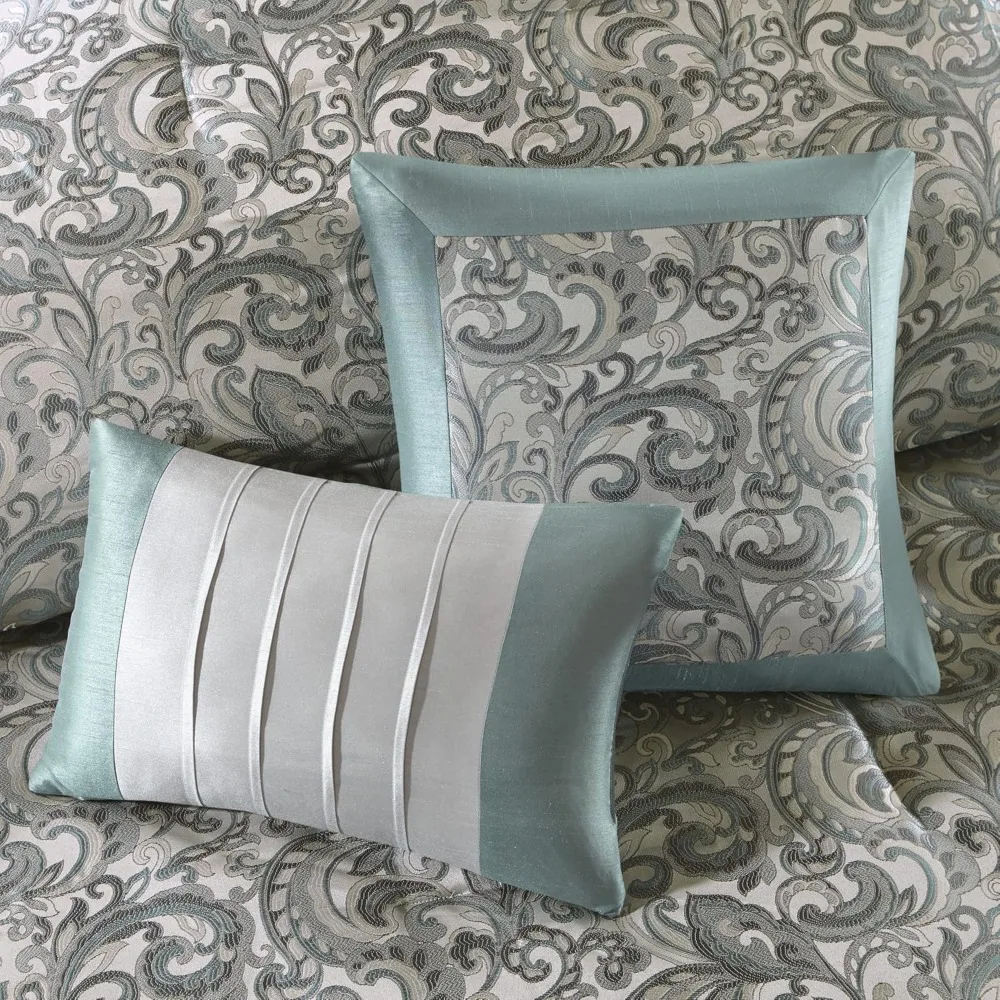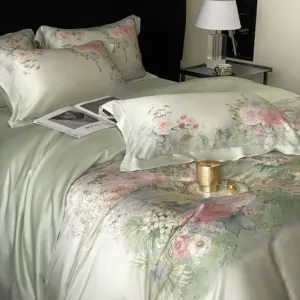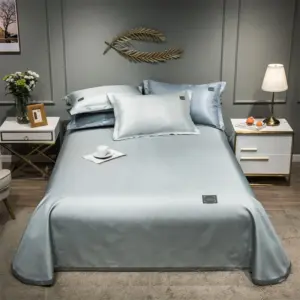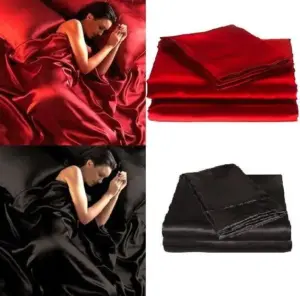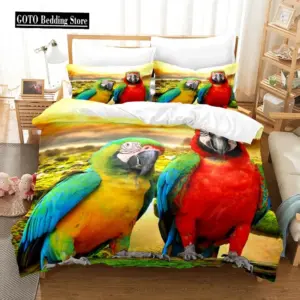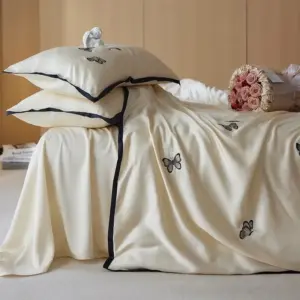Introduction to Ethical and Sustainable Silk Alternatives
The textile industry is witnessing a remarkable shift as consumers increasingly seek out ethical and sustainable alternatives to traditional fabrics. This growing trend is particularly evident in the silk market, where vegan alternatives are gaining popularity among environmentally and ethically conscious shoppers.
Traditional mulberry silk, while luxurious and coveted for its remarkable amazing benefits for bedding, comes with ethical concerns that many consumers find troubling. The conventional silk production process involves boiling silkworm cocoons while the silkworms are still inside, raising significant ethical questions about animal welfare in textile production.
This growing awareness has sparked interest in plant-based and synthetic alternatives that can offer similar benefits to mulberry silk—smoothness, temperature regulation, and lustrous appearance—without involving animal exploitation. These alternatives aren’t just substitutes; many offer unique advantages while aligning with ethical values that more consumers are prioritizing.
The good news is that the textile innovation space has responded with numerous eco-friendly alternatives to silk that mimic many of silk’s beloved properties. From wood-derived cellulosic fibers to agricultural byproducts transformed into luxury textiles, the options continue to expand and improve.
In this comprehensive guide, we’ll explore various vegan silk alternatives, examining their properties, sustainability credentials, and how they compare to traditional mulberry silk—helping you make informed choices that align with both your values and comfort needs.
Understanding “Vegan Silk”: Definitions and Distinctions
What Makes a Fabric “Vegan Silk”?
“Vegan silk” refers to any fabric designed to mimic silk’s distinctive properties without using animal-derived materials. These alternatives can be plant-based fibers or synthetic materials engineered to provide silk-like characteristics including smoothness, drape, and luster.
It’s important to distinguish truly vegan alternatives from “peace silk” or “ahimsa silk.” While these types of silk are harvested without killing the silkworms (waiting until they naturally emerge from their cocoons), they still involve animal products and aren’t considered vegan. Many consumers confuse these ethical silk options with truly vegan alternatives.
Another common source of confusion is satin. Satin is not actually a fiber but a weave structure that creates a smooth, glossy surface on one side of the fabric. While traditional satin was made from silk, modern satin is typically made from polyester or other synthetic fibers. When shopping for vegan alternatives, understanding the difference between fiber content and weave structure is crucial.
The key properties most consumers seek in plant-based silk alternatives include:
- Smooth, soft texture against the skin
- Distinctive lustrous appearance or sheen
- Elegant drape that flows with movement
- Breathability for comfort in various temperatures
- Natural temperature regulation for year-round use
By understanding these distinctions, you can better navigate the sometimes confusing terminology used in marketing and make choices that truly align with your ethical preferences while still enjoying the luxurious feel of silk-like fabrics.
Tencel™ Lyocell: The Eucalyptus Silk Alternative
Among the premium vegan silk alternatives, Tencel™ Lyocell stands out as one of the most sophisticated and sustainable options available. This remarkable fabric is crafted from sustainably harvested wood pulp, primarily from eucalyptus trees, which are fast-growing and require minimal water and pesticides.
What truly sets Tencel apart is its revolutionary production process. The fiber is created using a closed-loop spinning system that recycles over 99% of the solvents and water used, making it one of the most environmentally friendly textile production methods available today.
The resulting fabric offers properties that closely mimic traditional silk:
- Exceptionally soft and smooth surface texture
- Subtle natural luster that catches the light beautifully
- Superior moisture management (absorbs 50% more moisture than cotton)
- Natural temperature regulation for year-round comfort
- Breathability that creates a cooling effect during warm nights
- Biodegradable material that returns to nature at the end of its lifecycle
Tencel excels in applications where silk’s comfort properties are most valued, making it particularly suitable for eucalyptus silk sheets and bedding. Many users report that Tencel provides the luxurious sleeping experience they desire from silk, but with added durability and easier care.
The fabric’s natural moisture management properties make it ideal for bedding, as it helps maintain a dry, comfortable sleep environment throughout the night. This breathable fabric has quickly become a favorite among those seeking premium bedding that combines luxury with sustainability.
Modal: Luxury Beechwood Fiber
Modal offers another excellent plant-based alternative to mulberry silk, derived primarily from beech tree pulp. This semi-synthetic fiber is produced through a modified viscose process, resulting in a fabric with exceptional softness and beautiful drape that rivals traditional silk.
The unique properties of Modal make it particularly suitable for applications where comfort and drape are paramount:
- Extraordinarily soft texture—often described as “silky soft”
- Excellent drape that flows elegantly with movement
- Superior breathability for temperature regulation
- Impressive resistance to pilling and shrinkage
- Retains brightness and resists fading after repeated washing
- More water-efficient production compared to conventional cotton
Modal’s remarkable softness comes from its fine fiber structure, which creates a smooth surface that feels luxurious against the skin. This makes it particularly well-suited for intimate apparel, sleepwear, and bedding where direct skin contact is constant.
One of Modal’s greatest advantages is its practicality. Unlike traditional silk that requires delicate handling, Modal is typically machine washable and maintains its appearance and feel through numerous wash cycles. This combination of luxury feel with practical care requirements makes it an appealing choice for everyday luxury.
From an environmental perspective, Modal offers several advantages over conventional fabrics. The beech trees used in production require little irrigation and grow quickly without pesticides or fertilizers, making the raw material relatively sustainable compared to resource-intensive crops like cotton.
Cupro: The Elegant Cotton Byproduct
Cupro represents an innovative approach to sustainable luxury, transforming what would otherwise be waste into a sumptuous fabric with silk-like properties. This regenerated cellulose fiber is created from cotton linters—the short, fuzzy fibers that adhere to cotton seeds after ginning, which are typically discarded in conventional cotton processing.
Through an ingenious production method that dissolves these cotton linters in a cuprammonium solution (hence the name “Cupro”), these waste fibers are transformed into a smooth, flowing fabric with remarkable properties:
- Silky smooth texture with a cool, liquid-like hand feel
- Beautiful drape that hangs elegantly on the body
- Natural breathability that regulates temperature
- Hypoallergenic qualities ideal for sensitive skin
- Anti-static properties that prevent clinging
- Machine washable practicality unlike traditional silk
What makes Cupro particularly appealing from a sustainability perspective is its position within the circular economy. By utilizing a byproduct that would otherwise be wasted, Cupro exemplifies how vegan silk alternatives are made through innovative approaches to existing resource streams.
The fabric’s excellent drape makes it perfect for flowy garments like blouses, dresses, and skirts, while its smooth texture and temperature-regulating properties make it suitable for luxury linings and bedding. Additionally, Cupro’s ability to absorb dyes easily results in rich, vibrant colors that maintain their intensity over time.
While less common in the mainstream market than some other alternatives, Cupro represents an exciting direction for sustainable textiles that combine luxury performance with ethical production methods—exactly what conscious consumers are increasingly seeking.
Bamboo Silk: Sustainable and Versatile
Bamboo silk has emerged as one of the most popular vegan alternatives to mulberry silk, thanks to its combination of sustainability, comfort, and accessibility. Derived from bamboo plants—one of the fastest-growing resources on the planet—this material offers impressive environmental credentials alongside silk-like properties.
The journey from bamboo plant to silky fabric can take one of two primary routes, with significantly different environmental impacts:
Bamboo Viscose/Rayon: The more common and affordable process involves chemically breaking down bamboo pulp into a viscous solution that’s then extruded into fibers. While the end product is extremely soft and silky, the chemical-intensive process raises some environmental concerns.
Mechanical Bamboo: This more eco-friendly but expensive process involves crushing bamboo fibers and using natural enzymes to break them down, similar to how linen is made from flax. The resulting fabric is sometimes called “bamboo linen” and has a slightly coarser texture but far superior environmental credentials.
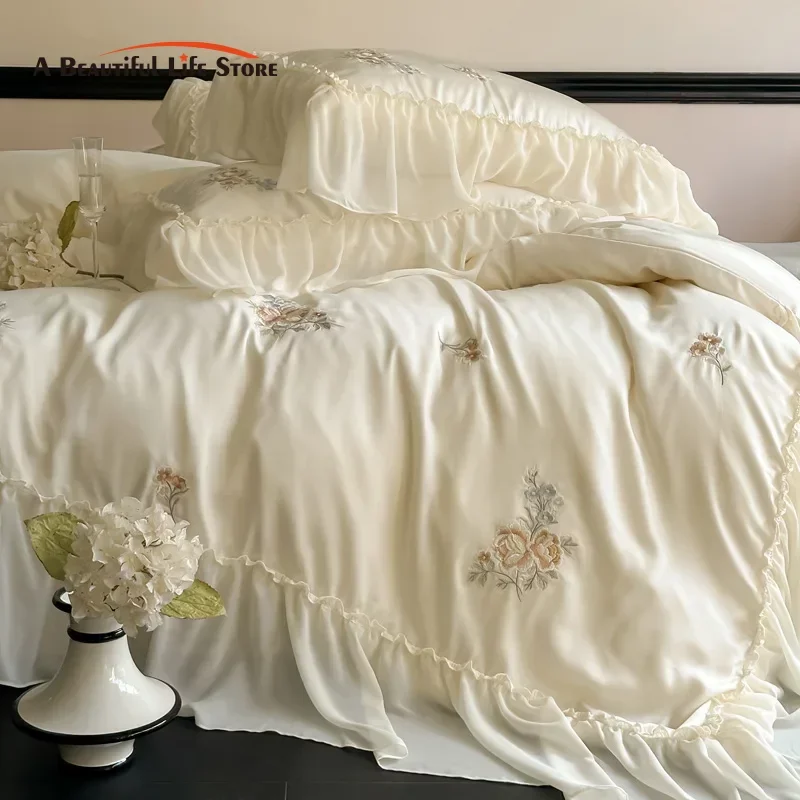
Regardless of the production method, bamboo silk offers impressive properties that make it a favorite for bamboo silk sheets and bedding:
- Soft, smooth texture that rivals silk in comfort
- Excellent breathability for hot sleepers
- Natural temperature regulation for year-round comfort
- Superior moisture-wicking capability (absorbs up to 40% more water than cotton)
- Natural antibacterial properties that help maintain freshness
Bamboo’s rapid growth cycle—some species can grow up to 3 feet in a single day—means it’s an incredibly renewable resource that requires minimal water, no pesticides, and regenerates quickly after harvesting. This remarkable sustainability profile, combined with its comfort properties, makes it easy to understand why bamboo compares favorably to mulberry silk fabric for environmentally conscious consumers.
The versatility of bamboo silk extends beyond bedding to towels, clothing, and undergarments, offering silk-like comfort with greater durability and easier care requirements.
Innovative Plant Fiber Alternatives
Beyond the more established vegan silk alternatives, a new generation of innovative plant-based options is emerging, many utilizing agricultural waste products to create luxury textiles with minimal environmental impact.
Piñatex™ (Pineapple Leaf Fiber)
This revolutionary material transforms the leaves from pineapple harvests—typically considered agricultural waste—into a versatile textile with a silk-like sheen:
- Created from fibers extracted from pineapple leaves without additional land, water, or fertilizers
- Features a distinctive natural texture that can be finished to various degrees of smoothness
- Offers breathability and flexibility similar to lightweight silk
- Provides durable performance with proper care
- Supports agricultural communities by creating additional income from existing crops
Orange Fiber™
This innovative Italian-developed fabric transforms citrus juice byproducts into silky, lightweight fabric:
- Made from cellulose extracted from orange peels left over from juice production
- Creates a silk-like fabric with a soft hand and beautiful drape
- Can be blended with other materials or used pure for different applications
- Represents a perfect example of circular economy principles
- Creates value from what would otherwise be waste material
Lotus Silk
Perhaps the most exclusive vegan silk alternative, lotus silk is harvested through a painstaking traditional process:
- Extracted from the stems of lotus flowers in a labor-intensive process
- Features exceptional softness, breathability, and a naturally wrinkled texture
- Regarded as one of the most expensive and rare textiles in the world
- Holds cultural significance in several Asian countries
- Requires specialized traditional skills passed down through generations
These innovative alternatives showcase the incredible potential for transforming agricultural byproducts and overlooked plant materials into luxurious, sustainable textiles that can compete with traditional silk on both performance and ethical grounds.
Hemp and Ramie: Ancient Fibers with Modern Potential
While many vegan silk alternatives represent cutting-edge textile innovation, some of the most promising options have ancient origins. Hemp and ramie fibers have been used for thousands of years across different civilizations and are experiencing a renaissance as sustainable alternatives to conventional textiles.
Hemp
Hemp fiber, derived from the stalks of the Cannabis sativa plant (industrial varieties without psychoactive properties), offers remarkable sustainability credentials:
- Requires minimal water (half the water needed for cotton) and no pesticides to grow
- Produces more fiber per acre than most other plants, including cotton
- Improves soil health through phytoremediation (removing toxins from soil)
- Creates a fabric that becomes softer with each washing while maintaining strength
- Offers natural UV protection and antimicrobial properties
When processed using modern techniques and blended with other fibers, hemp can achieve a much smoother, more lustrous finish that approaches the feel of silk, particularly in a satin weave.
Ramie
Ramie, one of the oldest fiber crops known to humanity, comes from the inner bark of the Boehmeria nivea plant:
- Naturally white fiber with a silky luster and excellent absorbency
- Exceptionally strong—one of the strongest natural fibers available
- Maintains its shape and doesn’t shrink
- Increases in strength when wet, unlike many other natural fibers
- Highly breathable and cool to the touch, making it perfect for warm climates
Both hemp and ramie represent sustainable alternatives that improve with modern processing techniques while maintaining their inherent environmental benefits. These fibers connect us to traditional textile wisdom while offering solutions to contemporary sustainability challenges.
Comparative Analysis: How Vegan Alternatives Measure Up to Mulberry Silk
When considering vegan alternatives to mulberry silk, understanding how they compare across various performance categories can help you select the option that best suits your needs. Each alternative offers different strengths and limitations relative to traditional silk.
| Property | Mulberry Silk | Tencel/Lyocell | Modal | Bamboo Viscose | Cupro | Hemp/Ramie |
|---|---|---|---|---|---|---|
| Feel & Luster | Exceptionally smooth with distinctive sheen | Very smooth with subtle luster | Soft with moderate sheen | Very soft with silk-like sheen | Liquid-like smoothness with elegant drape | Initially crisp, softens with use |
| Breathability | Excellent | Excellent | Very good | Excellent | Very good | Excellent |
| Temperature Regulation | Natural thermoregulation | Excellent moisture management | Good | Excellent | Good | Very good |
| Durability | Moderate (requires careful handling) | Good | Good | Moderate | Good | Excellent |
| Care Requirements | Dry clean or hand wash | Machine washable | Machine washable | Machine washable | Machine washable | Machine washable |
| Hypoallergenic | Yes | Yes | Yes | Yes | Yes | Yes |
| Environmental Impact | Higher (animal-based) | Low (closed-loop process) | Moderate | Varies by process | Low (uses waste product) | Very low |
| Relative Cost | High | Moderate-high | Moderate | Low-moderate | Moderate | Low-moderate |
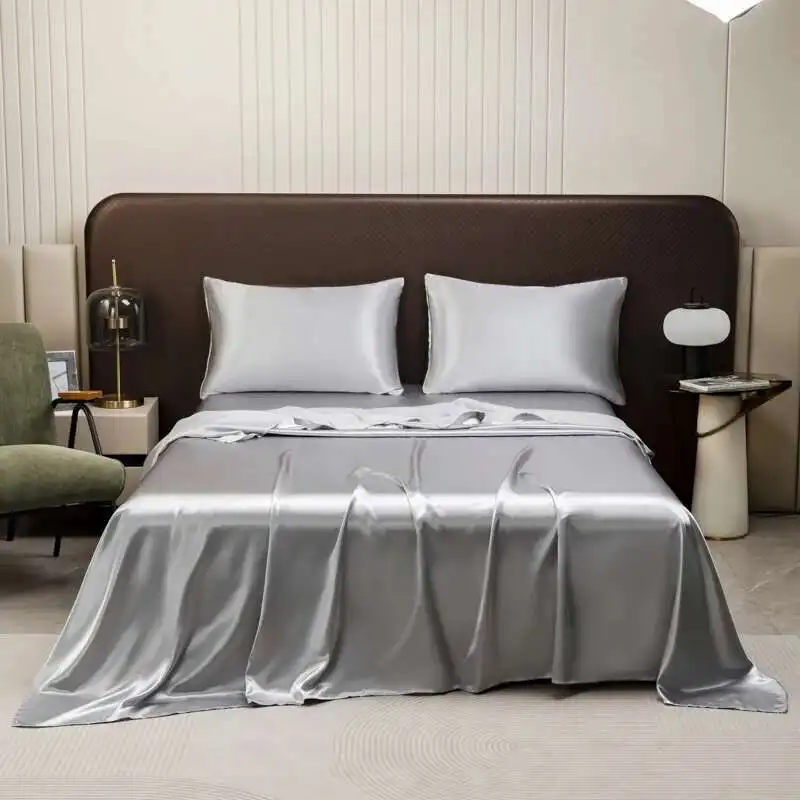
While traditional mulberry silk remains the benchmark for certain qualities—particularly its distinctive feel and natural sheen—vegan alternatives offer compelling advantages in several areas:
- Practical Care: Most vegan alternatives can be machine washed, unlike silk which typically requires dry cleaning or careful hand washing
- Durability: Many alternatives offer better resistance to pilling and wear than traditional silk
- Value: Nearly all vegan alternatives come at a lower price point than premium mulberry silk
- Ethical Production: Plant-based alternatives avoid ethical concerns associated with traditional sericulture
The performance gap between traditional silk and natural alternatives to silk fabrics continues to narrow as manufacturing techniques improve and consumer demand drives innovation in this space.
Eucalyptus Silk Bedding Sets, Eucalyptus Silk Sheets
Price range: $360.24 through $393.60 Select options This product has multiple variants. The options may be chosen on the product page- Price range: $267.82 through $306.55 Select options This product has multiple variants. The options may be chosen on the product page
Bamboo Silk Sheets, Cooling Silk Sheets
Price range: $130.76 through $177.80 Select options This product has multiple variants. The options may be chosen on the product pageBamboo Silk Sheets, Queen Size Silk Fitted Sheet
Price range: $230.24 through $297.88 Select options This product has multiple variants. The options may be chosen on the product page- 100% Bamboo Fiber Parrot Duvet Cover Set – Queen King Twin Size Tropical Bedding for Comfort & StylePrice range: $241.95 through $380.95 Select options This product has multiple variants. The options may be chosen on the product page
Bamboo Silk Bedding Sets, Bamboo Silk Sheets, King Size Silk Pillowcases, Queen Size Silk Pillowcases
Price range: $376.20 through $402.27 Select options This product has multiple variants. The options may be chosen on the product page
For specific applications like bedding, some alternatives may actually outperform traditional silk in practical ways, such as durability and ease of care, while still providing the smooth, cool sleeping surface that silk enthusiasts love.
Choosing the Right Vegan Silk Alternative for Your Needs
Selecting the ideal vegan silk alternative depends on your specific priorities, intended use, and personal values. Here’s a practical framework to help you navigate the options and find your perfect match:
Consider Your Primary Use Case
Different alternatives excel in different applications:
- For bedding and sheets: Tencel/Lyocell and bamboo viscose typically offer the best combination of smoothness, temperature regulation, and durability for vegan silk bedding options
- For clothing: Cupro and Modal provide excellent drape and movement for garments
- For durability: Hemp blends offer exceptional longevity and improve with age
- For sensitive skin: Tencel and bamboo are exceptionally gentle and hypoallergenic
Evaluate Sustainability Priorities
If environmental impact is your primary concern, consider:
- Water usage: Hemp and Tencel typically use significantly less water than conventional cotton
- Chemical processing: Mechanically processed bamboo and hemp involve fewer chemicals
- Closed-loop systems: Tencel’s production recycles water and solvents
- Agricultural impact: Cupro and Orange Fiber utilize waste products from existing agriculture
Understand Certification Standards
Look for credible certifications that verify sustainability claims:
- OEKO-TEX Standard 100: Ensures the fabric is free from harmful substances
- Forest Stewardship Council (FSC): Verifies wood pulp comes from responsibly managed forests
- Global Organic Textile Standard (GOTS): Certifies organic status for natural fibers
- MADE IN GREEN by OEKO-TEX: Verifies sustainable production and safe working conditions
Consider Care Requirements
Be realistic about the maintenance you’re willing to perform:
- Most vegan alternatives are machine washable, but some require gentle cycles
- Certain options like hemp become softer over time with washing
- Consider how the fabric will hold up to your typical laundry routine
For complete bedding solutions, bamboo silk bedding sets offer an excellent combination of comfort, practicality, and value that makes them accessible entry points to vegan silk alternatives.
The Future of Vegan Silk Innovation
The landscape of vegan silk alternatives continues to evolve rapidly as consumer demand grows and technology advances. Several promising developments point to an exciting future for these sustainable textiles.
Research into bio-engineered alternatives is particularly promising, with scientists exploring ways to create silk-like proteins through fermentation processes rather than animal sources. These innovations aim to replicate silk’s unique protein structure without involving silkworms, potentially offering perfect mimics of silk’s properties with none of the ethical concerns.
Traditional textile companies are increasingly investing in sustainable alternatives as they recognize the shifting market demands. This corporate attention brings much-needed research funding and manufacturing scale that can make these alternatives more accessible to mainstream consumers.
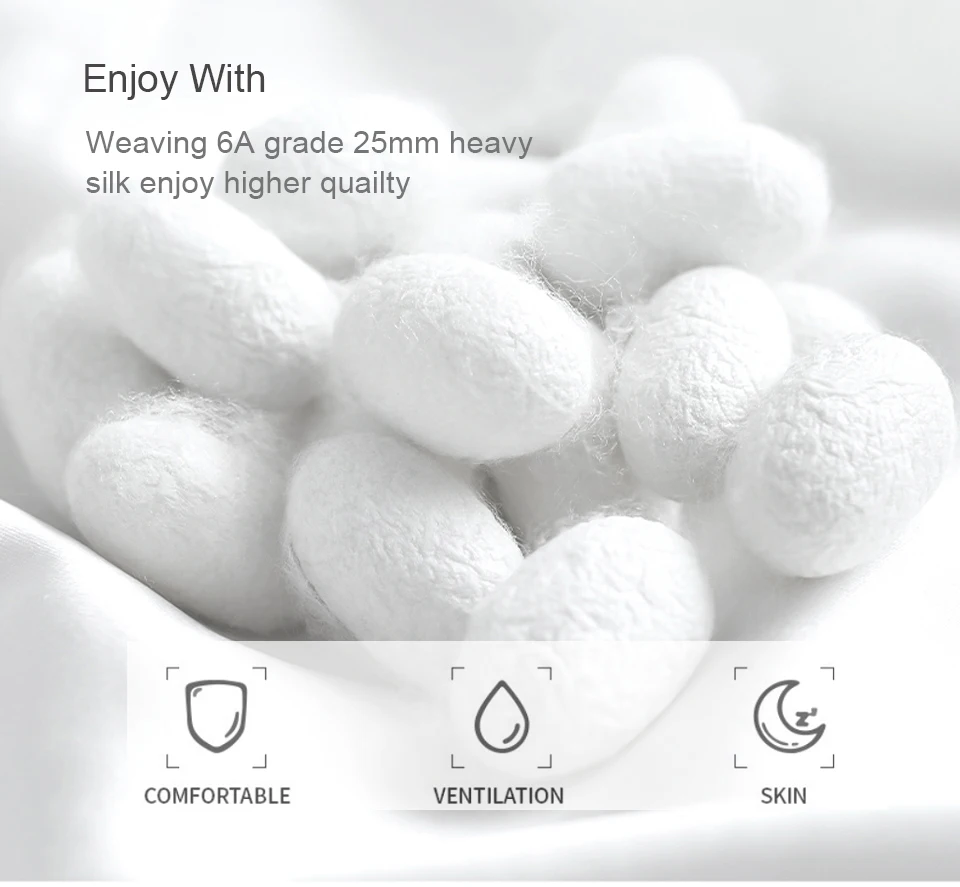
The role of conscious consumers in driving this innovation cannot be overstated. By choosing silk bedding alternatives and other vegan options, shoppers signal to manufacturers that there’s a viable market for these products, encouraging further investment and development.
At Sanctuary Soft, we’re committed to offering premium eucalyptus silk bedding sets and other vegan alternatives that don’t compromise on luxury or comfort. We believe that sustainable choices should enhance your experience, not diminish it, and the growing range of vegan silk alternatives makes this increasingly possible.
As technologies improve and production scales up, we can expect these alternatives to become even more competitive with traditional silk in both performance and price, making ethical luxury accessible to more consumers than ever before.

